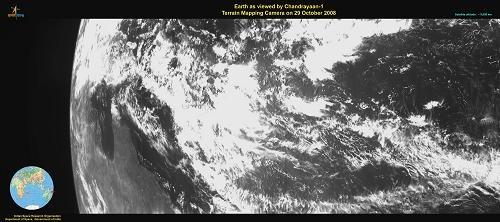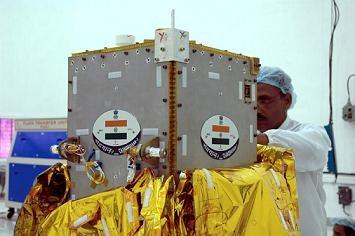Chandrayaan-1 found water on moon. This is a notable finding that could exhilarate space scientist to look for possibility of life in the lunar environment.
Scientist first claimed that water existed on moon about 40 years ago after they analyzed rock sample brought to earth by Apollo astronauts. But they had doubts about the finding because the boxes in which the moon rocks were brought to earth had leaked contaminating the samples with air from atmosphere. Now it is no more planetary “rock-solid truth” that moon contains no water. The finding ends four-decade long predication on whether there is water on moon.
India's maiden moon mission Chandrayaan-1 has detected evidence of water across the lunar surface. It traced water molecules on the moon’s surface. Chandrayaan-1 was carrying five Indian instruments and six from abroad, including M3 and another from NASA, three from the European Space Agency (ESA), and one from Bulgaria.
NASA’s instrument Moon Mineralogy Mapper (M3) aboard Chandrayaan-1 helped to find the existence of water molecules on the lunar surface. NASA's Ceassini spacecraft and NASA's Epoxi spacecraft have confirmed the find.

These images are viewed by NASA’s Moon Mineralogy Mapper on the ISRO’s Chandrayaan – 1 spacecraft. These images show a very young lunar crater on the side of the moon that faces away from Earth. On the left is an image showing brightness at shorter infrared wavelengths. On the right, the distribution of water-rich minerals (light blue) is shown around a small crater. Both water- and hydroxyl-rich materials were found to be associated with material ejected from the crater.
M3’s spectrometer from its perch in lunar orbit measured light reflecting off the Moon’s surface at infrared wavelengths, splitting the spectral colors of the lunar surface into small enough bits to reveal a level of detail in surface composition. The M3 science team analyzed data from the instrument; they found the wavelengths of light being absorbed were consistent with the absorption patterns for water molecules and hydroxyl.
The M3 team found water molecules and hydroxyl at diverse areas of the sunlit region of the Moon’s surface, but the water signature appeared stronger at the Moon’s higher latitudes.
On 09/24/2009 NASA thanked ISRO for making the discovery possible. The discovery of Indian maiden lunar mission tracing water molecules on the moon’s surface made scientists rejoiced with the hope that it will pave the way of growing vegetation in the earth’s natural satellite in future. Chandrayaan-1 has made great achievement in the planetary science.
courtesy http://www.nasa.gov
Last Updated ( Monday, 27 December 2010 07:10 )

